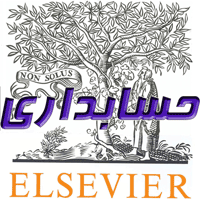دانلود مقاله isi اثرات پاداش بازخرید در برنامه های وفاداری
دانلود رایگان مقاله الزویر در مورد اثرات پاداش بازخرید در برنامه های وفاداری (کلیک کنید)
توضیحات مقاله ی ISI که میخام بخرم :
وبسایت مکاله اقدام به ارائه پروژه ی ساینس دایرکت با فرمت pdf، از انتشارات الزویر برای رشته بازاریابی، و با عنوان اثرات پاداش بازخرید در برنامه های وفاداری هنگامی که مشتریان زمان بازخرید و هزینه آن را انتخاب می کنند، نموده است.
مشخصات این مقاله :
عنوان مقاله :
Reward redemption effects in a loyalty program when customers choose how much and when to redeem
ترجمه فارسی عنوان :
اثرات پاداش بازخرید در برنامه های وفاداری هنگامی که مشتریان زمان بازخرید و هزینه آن را انتخاب می کنند
سال انتشار : 2014
متعلق به مجله یا ژورنال : نشریه بین المللی تحقیقات بازاریابی Intern. J. of Research in Marketing
فرمت: PDF
تعداد صفحات: 17
شماره پروژه: 5065
کلمات کلیدی :
Loyalty program, Reward redemption, Points pressure, Rewarded behavior ,Direct mailings ,Customer relationship management
برنامه وفاداری، پاداش بازخرید، رفتار پاداش، نامه های پستی مستقیم، مدیریت ارتباط با مشتری
چکیده :
Abstract
The redemption of loyalty program(LP) rewards has an important impact on LP members’ behavior, particularly on purchase behavior before and after redeeming a reward.However, little is knownabout the interplay between members’ purchase and redemption behavior when members are not pressured with point expiration and they
choose for themselves when and how much to redeem. In this context, the effects of redemption are not straightforward, as little additional effort is required from an LP member to obtain the reward. Analyzing the behavior of 3094 members in such an LP, we find that the mere decision to redeem a reward significantly enhances purchase behavior before and after the redemption event, even when members redeem just a fraction of their accumulated points. Conceptually, we refer to this enhancement as the redemption momentum, which is an alternative and novel explanation of the existence of pre-reward effects that do not depend on points-pressure. In addition to the overall impact of redemption on purchases, prior purchase behavior also enhances redemption decisions. Finally, we find a number of moderating effects on purchase and redemption behavior that derive fromthe length of LPmembership, age, income and directmailings. Our study’smost importantmanagerial implication is that firms should avoid imposing point expiry and/or binding thresholds in order to enhance members’ purchase behavior.
مقدمه این مقاله :
Introduction
In recent years, loyalty programs (LPs) have become the dominant tool for loyalty marketing worldwide. In the United States alone, the number of LP memberships exceeded 2.65 billion in 2012, increasing by 26.7% since 2010 (Berry, 2013). LPs aimto engage programmembers by rewarding their repeated purchases of a firm’s product through (the redemption of) loyalty points that members collect on their purchases. Therefore, the benefits of an LP for a member become the most salient when redeeming a reward (Nunes & Drèze, 2006; Smith & Sparks,2009a). Yet, asmuch as one-third of $48 billion worth of LP currency issued in 2010 remained unredeemed (Gordon & Hlavinka, 2011); likewise, The Economist estimated that “the total stock of unredeemed miles was worth more than all the dollar bills in circulation” (The Economist, 2005). To reduce liability, LPs introduced minimum thresholds and/or point expiration; however, this may undermine loyalty building efforts and engender customer frustration (Land, 2013;Stauss, Schmidt, & Schoeler, 2005). For example, point expiration is common in the airline industry where, due to restrictions on the availability of “award seats,” LP points often expire before members have an opportunity to cash in points (average award seat availability is only about 60% at major airlines (McCartney, 2012)). On the other hand, LPs are increasingly opting for a no-expiration (or long-termexpiration) policy to avoid negative customer experiences. For instance, 96% of credit-card programs promote “no expiration” as their key sales feature (Land, 2013). On the other hand,without the expiration pressure to redeem points, firms fear that members’ active engagement may decline and that their loyalty will fade in turn. Whether firms should encourage reward redemption and consider long-term expiration policies ranks among the least understood aspects of LPs (CRMtrends,2012; Shugan, 2005). Reward redemption may have an important impact on members’ behavior, particularly on purchase behavior just before and after redeeming a reward. Having to reach a pre-specified threshold on time to obtain a reward motivates members to increase their expenditures—an effect known as points pressure (Taylor & Neslin, 2005). However, if a customer already has enough points or (s)he has too few points to be able to reach the threshold, the points pressure becomes negligible (Hartmann & Viard, 2008; Lewis, 2004).
توجه :
– این مقاله به صورت کامل و با فرمت پی دی اف آماده خرید اینترنتی و دانلود آنی میباشد.
توضیحات بیشتر در مورد پروژه :
در این مقاله خواهید خواند که بازخرید از برنامه های مهم وفاداری (LP) پاداش می باشد که تاثیر مهمی بر رفتار اعضا قبل و بعد از بازخرید دارد. مهم ترین مفهوم این مطالعه این است که شرکت ها باید از بازخرید فزونی اجتناب کنند.
دانلود رایگان مقاله الزویر در مورد اثرات پاداش بازخرید در برنامه های وفاداری (کلیک کنید)

